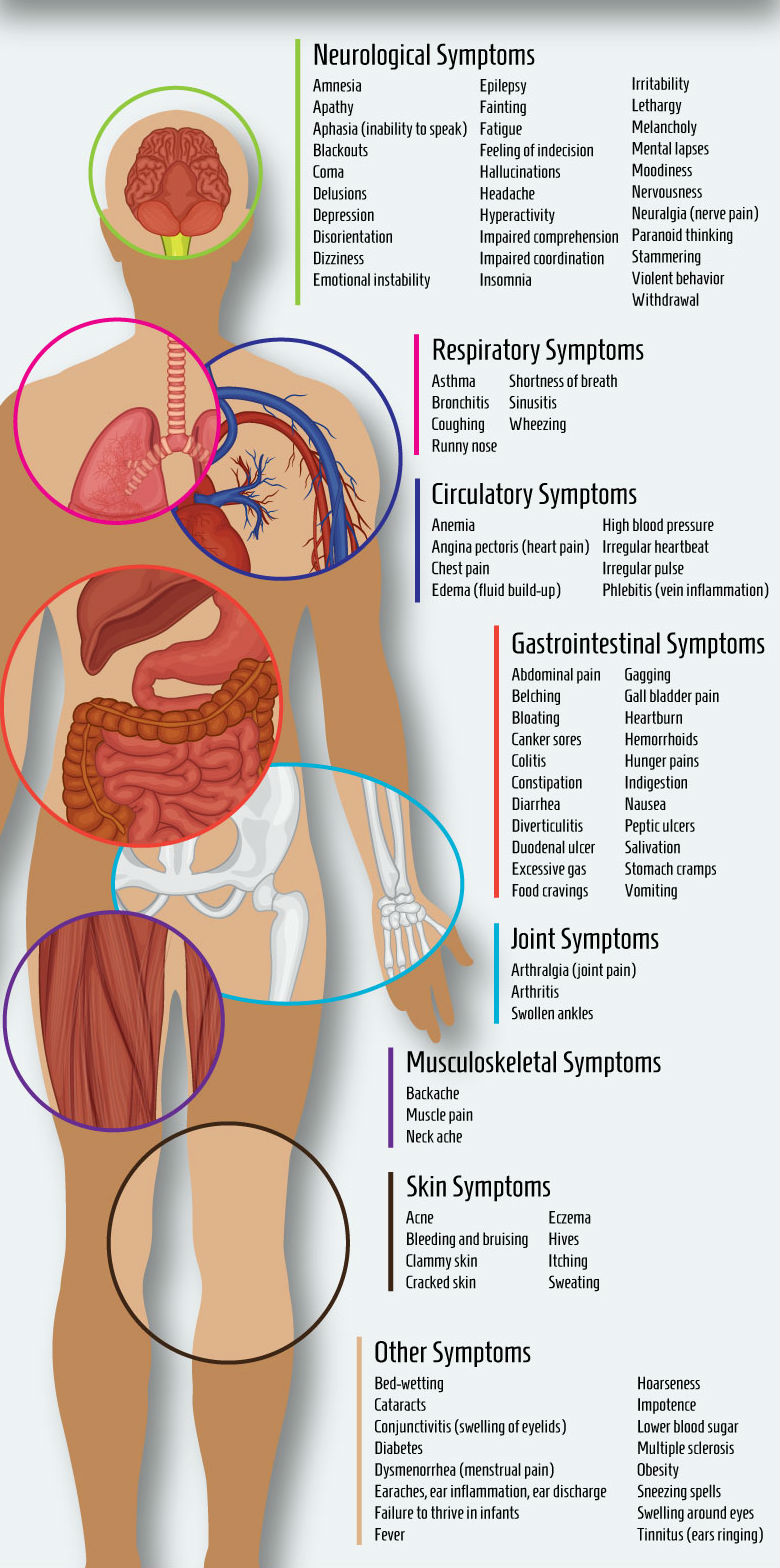Food Allergies And Food Intolerances
Food intolerance and food allergy are commonly confused as symptoms of food intolerance occasionally resemble those of food allergy. However, food intolerance does not involve the immune system and does not cause severe allergic reactions (known as anaphylaxis), unlike food allergies. Food intolerance is, in fact, a chemical reaction, but it does not show up on allergy testing.
Food intolerance
A food intolerance response takes place in the digestive system. It occurs when you are unable to properly breakdown the food.
This could be due to enzyme deficiencies, sensitivity to food additives or reactions to naturally occurring chemicals in foods. Often, people can eat small amounts of the food without causing problems, whilst eating more can leave them feeling miserable.
Symptoms of food intolerance:
- nervousness, tremor
- sweating
- palpitations
- rapid breathing
- headache, migraine
- bloating
- constipation
- diarrhoea
- IBS symptoms
- drowsiness
- stiff, aching joints
- back pain
- weight gain
- candida overgrowth
- burning sensations on the skin
- tightness across the face and chest
- breathing problems – asthma-like symptoms
- allergy-like reactions.

Long term health risks of food intolerance
Many people suffer with symptoms and illness for years before being tested for food intolerance. The main reasons for the delay in diagnosis are usually ignorance and denial.
While untreated food intolerance usually won’t lead to life-threatening health conditions, living with symptoms can contribute to chronic conditions such as diabetes, heart disease, thyroid disease and rheumatoid arthritis, along with many other conditions listed in the chart below.

Causes of food intolerance:
The foods that tend to cause intolerance reactions in sensitive people include:
- dairy products, including milk, cheese and yoghurt
- eggs, particularly egg white
- gluten
- corn
- soy
- chocolate
- flavour enhancers such as MSG (monosodium glutamate)
- food additives
- strawberries, citrus fruits and tomatoes
- wine (particularly red)
- histamine and other amines in some foods (e.g. canned fish; fermented products such as sauerkraut, yoghurt)

Food allergy
Unlike an intolerance to food, a food allergy can cause a serious or even life-threatening reaction by eating a microscopic amount, touching or inhaling the food.
A food allergic reaction involves the immune system. The immune system overreacts to an invader or allergen in food by producing antibodies called IgE. These antibodies travel to cells that release chemicals, causing an allergic reaction.
Symptoms of food allergy:
Common symptoms include:
- itching, burning and swelling/tightness in the mouth and throat
- difficulty talking and/or a hoarse voice
- runny nose & sneezing
- itchy, watery eyes
- skin rashes (atopic dermatitis & hives)
- hives
- diarrhoea, abdominal pain
- breathing difficulties, including wheezing or persistent cough
- nausea, vomiting
- becoming pale and floppy (in young children)
- persistent dizziness or collapse
- headache, irritability, fatigue, convulsions
- Without immediate treatment—an injection of adrenalin and expert care—anaphylaxis can be fatal.

Causes of food allergy:
The following food items cause about 90% of food allergic reactions, with peanut allergy being the most common. Only 1 in 4 children will outgrow peanut allergy.
- peanuts and tree nuts
- eggs
- milk
- wheat
- fish and shellfish
- soy

Avoiding the food
The easiest way to treat a food allergy or intolerance is to eliminate the offending food/s from the diet. Sometimes, the body can tolerate the food if it is avoided for a time, then reintroduced in small doses, particularly for food intolerances.
Before you eliminate or reintroduce foods long term, seek advice from a medical practitioner or dietitian to ensure nutrient deficiency will not result down the track.
